![]()
Recent Articles

Vintages -
Ontario’s own
Monthly wine Olympics
© Michael
Vaughan 2001
National Post Weekly Wine & Spirits
Columnist
Saturday,
July 7, 2001
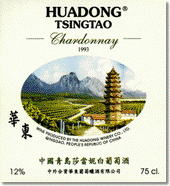 So
here we are on the edge of discovering who will host the 2008 Olympics.
And you can bet your shirt; it’s going to have a big impact on the type
of wines that are going to be consumed. If Paris wins, you’ll be lucky
to find anything but French sur le
table. As for Beijing, anything goes. Hopefully, we might rediscover
some decent Chinese Huadong
Tsingtao Chardonnay, which once graced our own LCBO shelves. As
for good old Toronto, I’m sure that our local vintners will have us up
to our elbows in celebratory Ontario releases.
So
here we are on the edge of discovering who will host the 2008 Olympics.
And you can bet your shirt; it’s going to have a big impact on the type
of wines that are going to be consumed. If Paris wins, you’ll be lucky
to find anything but French sur le
table. As for Beijing, anything goes. Hopefully, we might rediscover
some decent Chinese Huadong
Tsingtao Chardonnay, which once graced our own LCBO shelves. As
for good old Toronto, I’m sure that our local vintners will have us up
to our elbows in celebratory Ontario releases.
Of
course the one great thing about Ontario, is the wide variety of wines we
have from around the world that end up in Vintages. Toronto is one of the
most sophisticated wine centers in North America, where a fine Chablis can
live in total harmony with the best of California! Indeed, our monthly
Vintages release tasting is sort of like a mini-Olympic wine competition,
except that it happens here at home. While the Vintages catalogue informs
us of the awards their selections have garnered in numerous competitions
around the world, as your wine scribe I have the Mikadoesque
“chop-chop” duty of being chief judge and executioner determining
which wines live to see the light of day!
We
are, of course, inundated with the results of wine judging competitions
from around the world. Having participated in many of them - from Vinexpo
to the California State Fair where I judged 190 Chardonnays just two weeks
ago, I know that the key for the reader is accessibility. It’s great to
read that Chateau
Mel won double gold, only to discover that it isn’t available
here in Ontario. Certainly Canada Customs doesn’t help, allowing us to
only bring back a pathetic two bottles of wine per trip abroad. And so
while my “summer Olympic” tasting results come from a smaller base, at
least you can buy them!
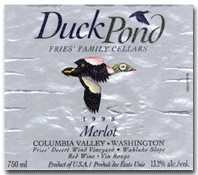 Starting
at the top, if I had one wine to pick from this entire release, it would
be from the Pacific Northwest - Duck
Pond Cellars 1998 Merlot Desert Wind Vineyard Columbia Valley Wahluke
Slope at only $19.95. This intense deep purple red coloured
beauty has wonderful, rich, mouthfilling, chocolate, plum-cherry purée
flavours with a fine lingering finish. It’s very well structured with
lots of ripe rounded tannins that auger well for the future. My only
dilemma is that when a Merlot tastes this good now, why wait? Only 168
cases are available and may I suggest that you snap up as many bottles as
possible – you won’t be sorry!
Starting
at the top, if I had one wine to pick from this entire release, it would
be from the Pacific Northwest - Duck
Pond Cellars 1998 Merlot Desert Wind Vineyard Columbia Valley Wahluke
Slope at only $19.95. This intense deep purple red coloured
beauty has wonderful, rich, mouthfilling, chocolate, plum-cherry purée
flavours with a fine lingering finish. It’s very well structured with
lots of ripe rounded tannins that auger well for the future. My only
dilemma is that when a Merlot tastes this good now, why wait? Only 168
cases are available and may I suggest that you snap up as many bottles as
possible – you won’t be sorry!
Fortunately, the July release has a number of other really outstanding fairly priced reds. A definite gem from New Zealand’s North Island is Linden Estate 1998 Cabernet Sauvignon Esk Valley Hawkes Bay at $18.80. While not as big as the Merlot, this charmer has a very attractive, spicy, key lime pie and blueberry compote nose. It is very accessible on the palate with delicious, ripe plum purée flavours and a lingering cedary-cassis finish. (www.hawkesbaywines.com/Linden_Estate)
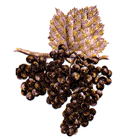
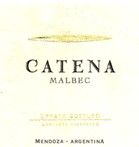 From
Argentina’s Mendoza, we have the truly outstanding Nicolas
Catena 1997 Malbec Lunlunta Vineyards ‘Catena’ at $19.75. With 14% alcohol, this is sublime example of Malbec at
its best. This grape also happens to be the key component of French Cahors.
In this region it is known as Cot. Indeed, at one time, Malbec could once
be found in most Bordeaux but was not replanted as it did not thrive in
the Maritime climate.
From
Argentina’s Mendoza, we have the truly outstanding Nicolas
Catena 1997 Malbec Lunlunta Vineyards ‘Catena’ at $19.75. With 14% alcohol, this is sublime example of Malbec at
its best. This grape also happens to be the key component of French Cahors.
In this region it is known as Cot. Indeed, at one time, Malbec could once
be found in most Bordeaux but was not replanted as it did not thrive in
the Maritime climate.
Fortunately,
there is no need to worry about the Argentine vineyards where it thrives.
Catena’s nose is chocolaty, complex and classy with bright, raspberry
purée notes. Its well-structured, rather chocolaty, spicy, ripe plum purée
flavours will tame the best of steaks.
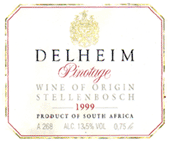 Even
less mainstream is South African Pinotage, which comes a stunning variety
of styles that you’ll either love or hate. Luckily I am in the former
group and Delheim
1998 Pinotage Stellenbosch is exceptionally fine value at
$16.85. The nose is slightly rusty with earthy, sandalwood and sundried
tomato notes – somewhat medicinal reminiscent of Band-Aids. The medium
bodied, tangy, slightly cedary, smoky, dried raspberry fruit flavours show
good length. A real winner with BBQ ribs.
Even
less mainstream is South African Pinotage, which comes a stunning variety
of styles that you’ll either love or hate. Luckily I am in the former
group and Delheim
1998 Pinotage Stellenbosch is exceptionally fine value at
$16.85. The nose is slightly rusty with earthy, sandalwood and sundried
tomato notes – somewhat medicinal reminiscent of Band-Aids. The medium
bodied, tangy, slightly cedary, smoky, dried raspberry fruit flavours show
good length. A real winner with BBQ ribs.
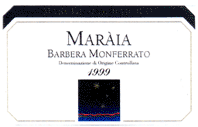 Last
but not least is a neat entry from Italy’s Piedmont, the deeply coloured
Marchesi di
Barolo 1999 Barbera Monferrato Maràia at $12.75. It’s fairly
rich with cloves, chocolate, red pepper purée flavours, which have a
long, leanish, lemony finish - perfect for the BBQ. Better yet, Prevedello
& Mathews who just won the LCBO’s coveted best agent “Elsie”
award has arranged to have one dollar of every bottle sold ($25,200) to be
donated to Second Harvest thanks to a 50-cent donation by Marchesi di
Barolo, which is matched by the LCBO.
Last
but not least is a neat entry from Italy’s Piedmont, the deeply coloured
Marchesi di
Barolo 1999 Barbera Monferrato Maràia at $12.75. It’s fairly
rich with cloves, chocolate, red pepper purée flavours, which have a
long, leanish, lemony finish - perfect for the BBQ. Better yet, Prevedello
& Mathews who just won the LCBO’s coveted best agent “Elsie”
award has arranged to have one dollar of every bottle sold ($25,200) to be
donated to Second Harvest thanks to a 50-cent donation by Marchesi di
Barolo, which is matched by the LCBO.
I
would love to wax poetic about Quintarelli
1994 Rosso del Bepi at $74.95, which adorns the front cover of
this month’s Vintages catalogue, but my review, which runs one-third the
entire length of this column, wouldn’t fit. It is, however, freely
available on my website.
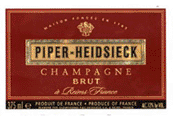
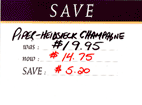 Last
but not least, for next Friday’s Olympic victors let me the absolute
best buy celebratory bubbly at the LCBO. Call the Queens Quay or Bloor
& Dundas store (416-535-2580) to see if they have more cases of Piper
Heidsieck Champagne available at the incredible blowout price
of only $14.75 per half-bottle. Not only is it a fraction of the price of
its competitors, but it also tastes a lot better!
Last
but not least, for next Friday’s Olympic victors let me the absolute
best buy celebratory bubbly at the LCBO. Call the Queens Quay or Bloor
& Dundas store (416-535-2580) to see if they have more cases of Piper
Heidsieck Champagne available at the incredible blowout price
of only $14.75 per half-bottle. Not only is it a fraction of the price of
its competitors, but it also tastes a lot better!
If you need larger 750 ml bottles, you may want to pick up some
Lanson Black Label which has been discounted from $43.45 to
$33.95 - a very good deal as well! (www.piper-heidsieck.at)
Winery
Notes on Duckpond 1998 Merlot
17500 cases produced
Appellation: Columbia Valley, WA
Vineyards: Fries Desert Wind Vineyard, Wahluke Slope
Release Date: October 2000
Alcohol 13.2%
• TA .55 • pH 3.69
Tasting
Notes
The
1998 Merlot is big and juicy! Lots of fruit in this wine with deep flavors
of cassis and oak. A solid backbone of tannins really makes the wine chewy
and bold. The depth of this wine will surprise you for the price.
Excellent partner to red meat or pasta with a hearty red sauce.
Winemaker’s Notes
The
1998 Merlot is 95% Merlot and 5% Cabernet Franc. The Cabernet France was
added to enhance bouquet and increase body in the wine. This vintage was
aged for 15 months in American oak barrels. 60% new barrels added tannin
and vanilla aroma. The grapes were harvested at 24 – 24.5 brix and then
20% of the 1998 vintage was fermented in rotary fermenters.
Vineyard
Fries’
Desert Wind Vineyard is located in Eastern Washington on the Wahluke
Slope. This site is considered a zone 3, the hottest in the Columbia
Valley. The 480-acre vineyard is a southern facing block with a 2% down
hill slope. The soil is very shallow and rocky and the vines are irrigated
with and underground drip system.
Double
catch wires are used to increase air circulation during the growing
season. Leaf pulling and cluster thinning are important steps in aiding
the ripening of the grapes.
Copyright Food & Beverage Testing Institute of Canada
2004
Prior written permission is required for any form of reproduction
(electronic or other wise) and or quotation.
Contact Michael Vaughan at
mbv@total.net